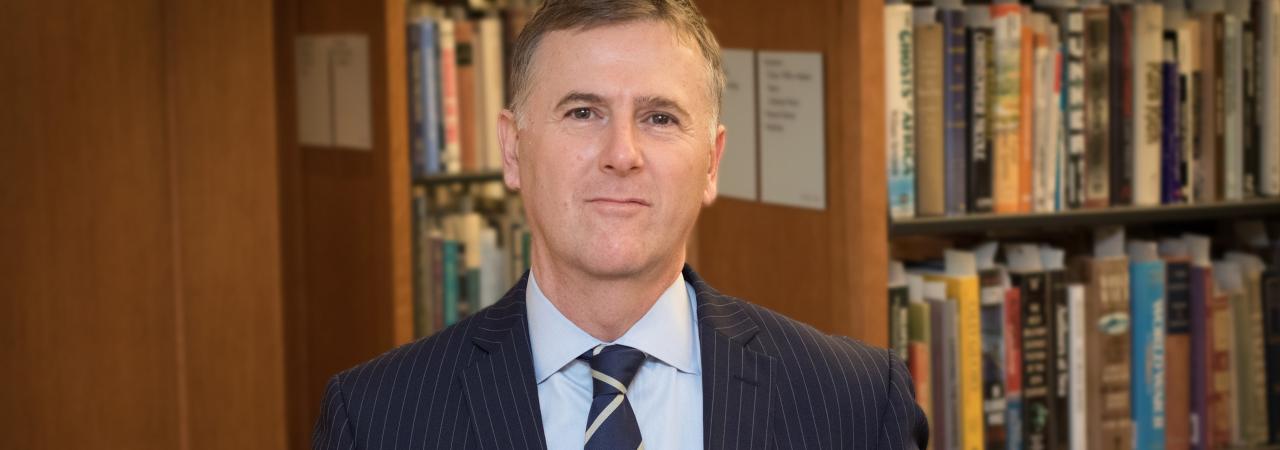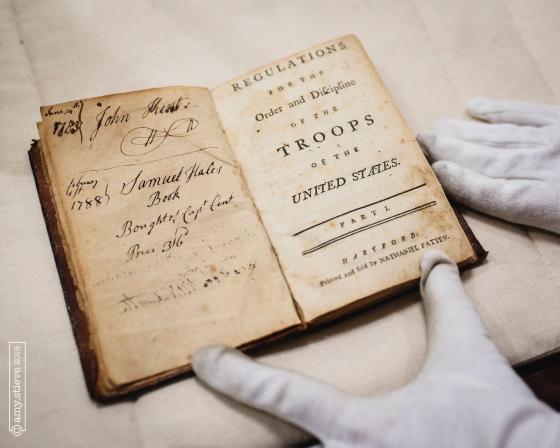
The Trust spent some time with Dr. Rob Havers, new President and CEO at the Pritzker Military Museum & Library, and asked him a few questions about the museum, history, and battlefield preservation.
The Pritzker Military Museum & Library awarded a $500,000 matching grant to the American Battlefield Trust in December 2018, in support of our effort to save 18 crucial acres of the Gettysburg Battlefield on Seminary Ridge. This funding greatly advanced our efforts to raise the $3.5 million purchase price for the property and declare a preservation victory. The Trust is proud to partner with the Pritzker Military Museum & Library in support of our common mission to honor this nation’s strong tradition of citizen soldiers. We encourage you to visit the Pritzker Military Museum & Library in Chicago to view its impressive collection of 60,000 volumes and unique military artifacts, equipment, documents and uniforms. The Trust spent some time with Dr. Rob Havers, new President and CEO at the Pritzker Military Museum & Library, and asked him a few questions about the museum, history, and battlefield preservation.
American Battlefield Trust: Dr. Havers, what has drawn you to study military history?
Dr. Rob Havers: A boyhood fascination with history and the military has led to a career involvement with both (although as a civilian in the latter).
How is visiting the Pritzker Military Museum & Library different from visiting other museums?
RH: Our mission ‘to acquire and maintain an accessible collection of materials and to develop appropriate programs focusing on the citizen soldier in the preservation of democracy.’ The Pritzker Military Museum & Library adeptly connects past, present and future in a way that few, if any, organizations do.

What do you hope visitors will take away from their time at the Museum & Library, or other historic military sites?
RH: I hope that our visitors come away with an understanding that war shapes our world and the self-sacrifice of those involved is not forgotten. The more widely known and appreciated the cost of conflict, the more reticent we should be about rushing to war in the future.
How do physical pieces of history, like the artifacts in the Pritzker Military Museum & Library or preserved historical sites, inspire and educate visitors?
RH: There is little to beat seeing an artifact of great historical significance in person. The fact of its existence brings immediacy and permanency to any discussion of its role in history. One of the best examples is the flag that flew above Fort McHenry in the war of 1812 and the inspiration it provided for the national anthem. The Smithsonian National Museum of American History displays the 30-by 34-foot flag in a special environmentally-controlled chamber, complete with interactive displays and an online platform, so the visitor can truly understand its larger story and its impact of US history. The complete exhibit inspires deference and awe in any visitor.
Do physical reminders of our history, such as artifacts or historic sites, have a role in modern society?
RH: Yes, for the reasons outlined above. It’s also a physical, and therefore tangible, reminder of and connection to the past.

Why is it important to learn about our past?
RH: For its own sake, the study of the past is a fascinating endeavor but understanding what people actually thought at the time, rather than what we might like to think they thought, is illuminating. I’ve always liked the following quotation in this regard, frequently misattributed to Winston Churchill. “The further backward you look, the further forward you can see.” The study of history provides a useful perspective on the past and some insight into the future.
What is your vision for the Museum & Library?
RH: To maintain the tremendous momentum we have developed, and to improve recognition of what we do and how we do it in our local community. Then, transfer that recognition to the national and international stage.
If you had to pick one, what is your favorite exhibit or artifact?
RH: One of my favorite collections at the Pritzker Military Museum & Library is the Donald E. Casey Collection. It details the experiences of a local man, Donald Casey, who became a Prisoner of War in Germany during WW2. He survived the war and became a successful lawyer here in Chicago and eventually a volunteer at the PMML. His story is incredible. With my background in POW studies, I found his story particularly interesting. Pieces of his collection will be featured this summer in our new exhibit that will focus on the everyday life of the soldier.

How can we raise awareness about our nation’s history, military and otherwise?
RH: The programs that we undertake, such as our TV series “Pritzker Military Presents, “Citizen Soldier” and the “Holt Oral History Program”, do a good job of alerting this country to the role of the military and veterans.
What is your favorite battlefield? Why?
RH: I have two ‘favorite’ battlefields. The first is Gettysburg because of its accessibility, what was at stake, and how close a decision was for either side at Little Round Top. My other favorite is the Somme, in France. In particular, a considerable span of ground where the Devonshire Regiment was stationed on July 1, 1916 (I am from Devon in the United Kingdom). Largely, the men of the Devonshire regiment did not make it much beyond their trench lines and were buried where they fell. A cemetery marks each unit advance since actual progress was negligible across most of the front. At the Devonshire cemetery is a plaque inscribed with the words originally written by hand. The inscription reads ‘The Devonshires held this trench, the Devonshires hold it still’. Poignant, tragic and heroic stuff indeed.


